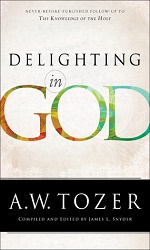 “In the name of the Father, Son, and Holy Spirit, amen.” This is the way Christians, of various confessional backgrounds, have understood and referred to the three persons of the trinity for hundreds of years. In fact, it has been the overwhelmingly majority way in which Christians think of the relationship of the persons of the godhead. And it is for good reason that they think of them this way because it is historically consistent with the witness of Scripture and the church.
“In the name of the Father, Son, and Holy Spirit, amen.” This is the way Christians, of various confessional backgrounds, have understood and referred to the three persons of the trinity for hundreds of years. In fact, it has been the overwhelmingly majority way in which Christians think of the relationship of the persons of the godhead. And it is for good reason that they think of them this way because it is historically consistent with the witness of Scripture and the church.
But is it the only way in which the Bible expresses the relationship of the three persons of the trinity? Is it the only triadic order that is presented? Is it the only way in which the three persons of the trinity can be ordered? We typically order the persons of the trinity as Father, Son, and Spirit because of the hierarchical nature we see expressed in the godhead, but is that it? It is being faithful to Scripture when we stop there? Are we overlooking other orderings of the persons of the trinity because we rely so heavily on just one?
In his new book, Reordering the Trinity: Six Movements of God in the New Testament (Kregel, 2015), Rodrick K. Durst, professor of historical theology a Golden Gate Baptist Theological Seminary, convincingly argues that the New Testament authors had a much more diverse understanding of the relationship of the persons of the trinity that much of the Church has missed since the closing of the canon. While this diversity of understanding and expression was more predominate in the first few centuries of the church, it has been less so since with little press.
As already mentioned, while most Christians think of the order of the trinity as Father, Son, and Spirit (F-S-Sp), there are in fact five other orderings in the NT:
- Father-Son-Spirit (F-S-Sp) – Missional Order
- Father-Spirit-Son (F-Sp-S) – Regenerative Order
- Son-Father-Spirit (S-F-Sp) – Christological Order
- Son-Spirit-Father (S-Sp-F) – Sanctifying Order
- Spirit-Father-Son (Sp-F-S) – Spiritual Formation Order
- Spirit-Son-Father (Sp-S-F) – Ecclesial Order
The crux of the book is simple: these various orderings are used by the NT authors intentionally so as to express the various ways in which the functions/roles/responsibilities of the persons of the trinity relate and interact with each other. So, while it is accurate to refer to the trinity in the order of F-S-Sp, it is not the only way in which it would be considered biblically accurate to do so. In fact, says Durst
Research indicates that there are seventy-five Trinitarian references in the New Testament. Just eighteen instances (twenty-four percent) do follow the expected order of Father, Son, and Spirit. The remaining fifty-seven instances (seventy-six percent) exist in [the] five other diverse orders. (73)
Think about that. The standard order of F-S-Sp only accounts for 24% of the six orderings. To put this into perspective, the second runner up in terms of frequency is S-Sp-F comprising 20% of the occurrences. The last being the Sp-S-F ordering which takes up 10% of the total Trinitarian references. As Durst would argue, if we want to be faithful to Scripture in our understanding and expression of the trinity then the standard F-S-Sp ordering ought not be the only way in which we talk about the trinity. It may be the majority way but it is by far the only way.
Though not an historically new concept, or one that is unnatural to the biblical text, Durst’s proposal will seem new to many. Durst himself has taken inspiration from others before him but much of his work here is his own. Because of the newness for many readers Durst takes pains in the first several chapters to lay a foundation for what will follow. He admits early on that if one does not accept his proposal in the first section then the rest of the book will probably fall on deaf ears. This might be so for some. But, if we are willing to let the text teach us in new ways, I think the most convincing portion of the book is the section in which Durst lays out the six triadic orderings.
This is truly a book that has taken a theological/biblical concept and advanced the discussion. This is no small feat. Reordering the Trinity is not a book about imposing artificial concepts onto the trinity. Durst is not trying to reorder the Bible. Rather, what you will find at the end of the book is that your own thinking about the trinity has been reordered into a more biblically faithful understanding.
The implications for this book will only be understood more fully as one continues to ponder and study the text of Scripture regarding the trinity. You will be amazed at what you have missed and you will be amazed that the NT writers were much more Trinitarian than we give them credit for. The trinity was more real and natural in their thinking than we think and we need to make their understanding a more real and natural part of our thinking as well.
I received this book for free from Kregel for this review. I was not required to write a positive review. The opinions I have expressed are my own. I am disclosing this in accordance with the Federal Trade Commission’s 16 CFR, Part 255 : “Guides Concerning the Use of Endorsements and Testimonials in Advertising.”



